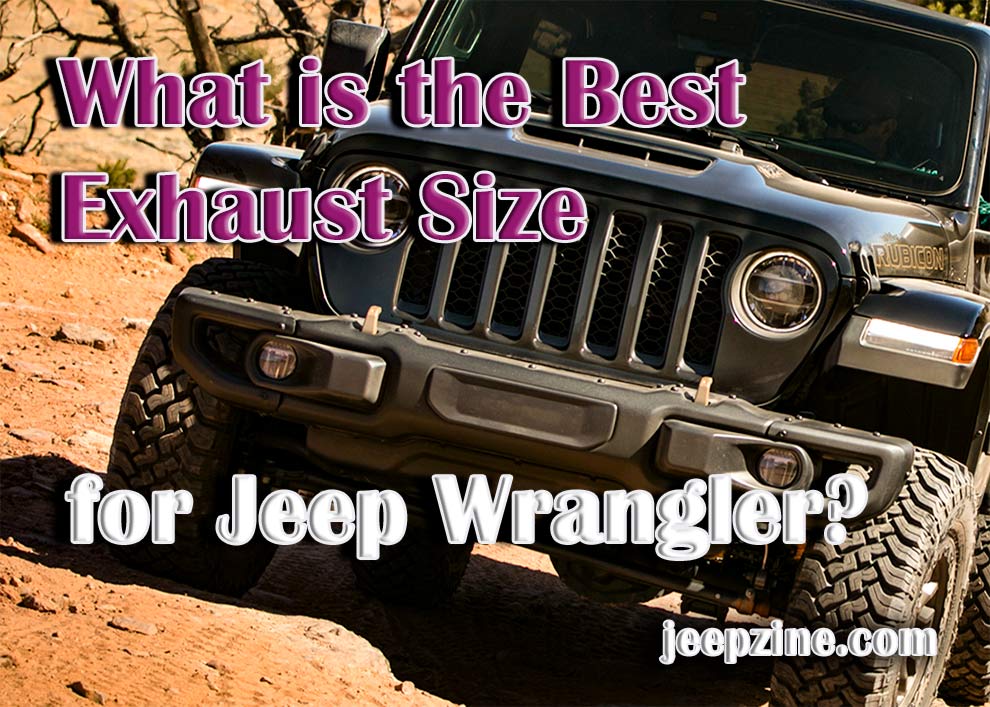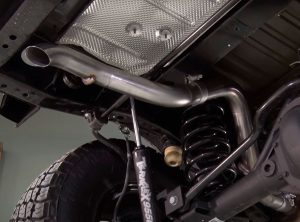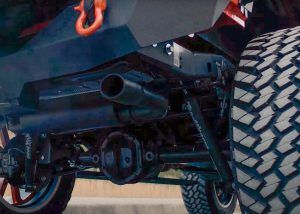Say, you’re looking for a new Exhaust for Jeep JK, TJ, or JL. What size should the new exhaust be? And does the diameter really matter? Or maybe you can just skip this part? That’s exactly what we’re here to figure out! In contrast to the 80s, modern-day aftermarket exhausts are very similar. They are manufactured to be a direct fit for a wide range of vehicles.
Still, it would be wise to know what you’re looking for in advance to get the best bang for your buck. This is especially true if you’re a big fan of off-roading and drive the Wrangler through challenging terrain. That puts extra pressure on the exhaust system, which, again, is why it’s important to figure out the right size.
Figuring out the Wrangler’s Exhaust Diameter
By default, most Jeeps come with a standard exhaust system that’s 2.5 inches in diameter. However, depending on your vehicle’s model, make, year, and trim level, the size might be a bit different. Say, on the 1995-2000 TJ, the exhaust is 2.5-inches, but only from the manifold/header to the catalytic converter. Moving down to the muffler and all the way to the tailpipe, it’s actually 2.25 inches.
So, I highly recommend grabbing a tape measure and, well, measuring the factory exhaust’s size slash diameter. That’s the only way that you can be truly sure an aftermarket part is going to be a perfect fit with the rest of the exhaust. If you’re shopping locally, you could ask the mechanics or staff members to help out with that.
The Difference between Body and Inlet/Outlet Size
It’s very important to understand that when we’re talking about the diameter or size of the exhaust system, we’re mostly talking about the inlets and outlets. The inlet is the end pointing towards the motor; the outlet is the one flowing into the tailpipe. If you get their sizes wrong, that means you’re in trouble, especially if the inlet and outlet are too narrow. Therefore, you need to make sure to get these measurements right unless you’re a pro mechanic.
But what about the actual body, you might ask? Does its size play a key role? Yes, it does, but there are no 100% right or wrong answers here. It all depends on what you’re looking to get with the aftermarket upgrade and what kind of a driver you are. Say, off-roaders like when the engine is loud and aggressive. Daily drivers, in turn, prefer the exhaust noises to be dialed down.
The Benefits of a Small-Body Exhaust
Did you know that smaller exhausts are much better at “handling” the exhaust fumes? That’s right: the narrower the pipes, the faster the vapors travel through the system and escape from the pipe. On top of that, small-body exhausts perform slightly better on low RPMs, and the engine starts to growl as the Jeep is accelerating. The top speed will be slightly reduced, though – keep that in mind.
Another big pro is the elimination of the exhaust drone. I’m talking about the humming, vibrating sounds that appear when you reach 3-3.5K RPMs. The Wrangler is known for the annoying drone sounds in the third or fourth gears. Well, that won’t be a problem anymore with a narrower exhaust size.
The Pros of a Large-Body Exhaust
As you might’ve already figured out, when the exhaust pipes are larger, they perform better on higher RPMs but struggle a bit when speeding up. Along with that, the driver feels a bit more in control over the SUV when cruising down the trail at a near-maximum speed. So, what is the best exhaust size for Jeep’s legendary Wrangler? As we learned today, it’s a somewhat subjective thing.
And now that we’ve discussed both options in detail, it’s up to you to decide what kind of setup you want to see on your vehicle. But if you ask me, for conquering the wilderness and scaring all the wild animals in the neighborhood, a smaller exhaust is the way to go. The reason: you need strong performance on low RPMs when pushing through rough terrain.




Add Comment